Text types: Text formats for presenting information
| Charts & diagrams |
Explanations
A diagram makes an explanation very clear. Students are able to see the relationships between one stage and another. A very simple type of explanation is the life-cycle diagram:
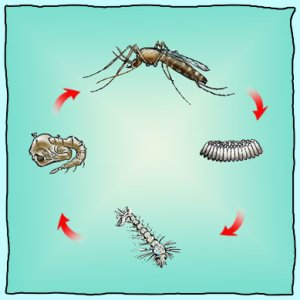
Here is a more abstract life-cycle diagram that you could adapt for your students when they are reading or writing about topics such as the life cycle of plants, butterflies, frogs, fish, stars, and so on:
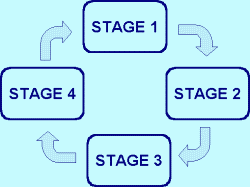
A diagram can help to make clear the causes and effects in an explanation.
Here is a diagram showing a simple cause and effect - how the change in temperature causes a breeze:
| Sea
Breeze
Air moving from the sea to the land is called a sea breeze. During the day the air over land is warmer than the air over water. The air is warmer because land heats up faster than water. As the warm air over the land rises, the cool air over the sea moves in to take its place. |
|
| Land
Breeze
Air moving from the land to the sea is called a land breeze. In the evening the air over the water is now warmer than the air over the land. As the warm air over the sea rises, the cooler air over the land moves in to take its place. |
|
This could be represented in a more abstract way as follows:

A more complex chain of causes and effects can be seen in this diagram of the water cycle:
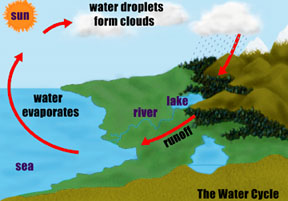
This type of explanation could be represented in a more abstract way as follows:
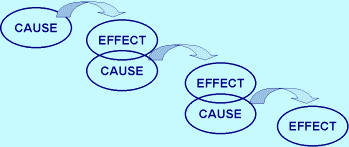
We can also find explanations where there are many different causes producing an effect, such as the causes of erosion (wind, lack of plants, water, poor farming):

Similarly, we can find explanations where there are many effects from a single cause, such as how poverty causes disease, homelessness, suicide, and so on:
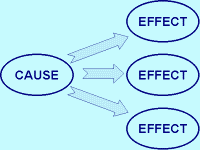
For more information on explanations, see ![]() Text types: Explanations: Overview
Text types: Explanations: Overview
|
Tell me more ... Using
charts and diagrams |
|
||
To give us feedback about this section, click here or on the Comment button at the top of the screen.
If you have any questions about this section, visit the Language Corner.
If you have any questions or suggestions about how to teach this section, send a message to the Teaching Corner.